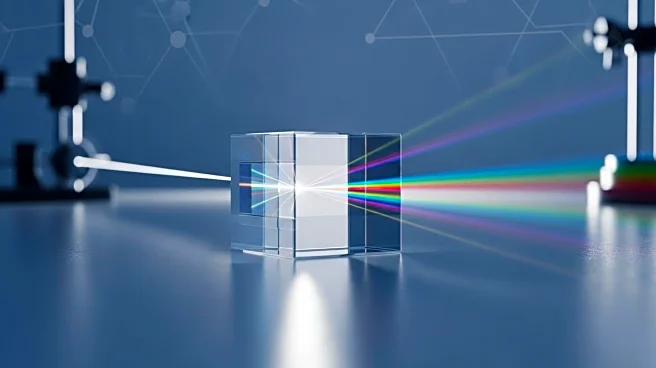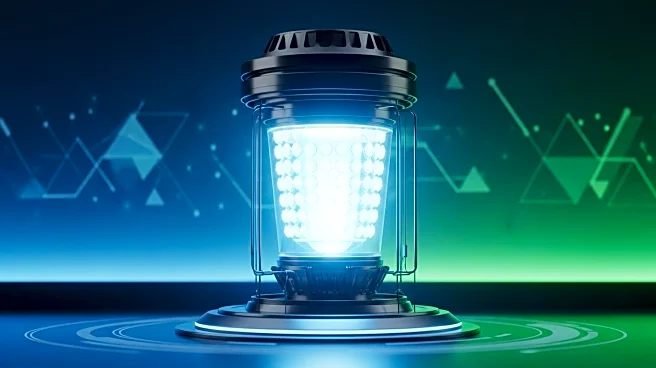What's Happening?
A research team has successfully developed a boundary-induced scattering mechanism to efficiently excite higher-order hyperbolic phonon polaritons (HoHPhPs). These polaritons, which arise from photon-phonon coupling under geometric confinement, offer larger wavevectors and field confinement compared to fundamental hyperbolic phonon polariton modes. The team achieved substantial momentum compensation through scattering at the gold edge of a gold-air hybrid substrate, validated by dyadic Green’s function theory. This method increases the excitation efficiency of HoHPhPs by more than sixfold compared to conventional methods. Experimentally, HoHPhPs were observed in α-MoO3 layers with a propagation distance of up to 15.2 μm, demonstrating a pseudo-birefringence effect with ultrahigh equivalent birefringence. This advancement introduces a novel strategy for efficient excitation of HoHPhPs, establishing them as a versatile platform for nanophotonic applications such as mode routing in nanocircuits.
Why It's Important?
The development of efficient excitation methods for HoHPhPs is significant for the advancement of nanophotonic devices. These polaritons offer enhanced wavevector and field confinement, which are crucial for compact device applications. The ability to efficiently excite HoHPhPs opens new possibilities for their use in mode routing within nanocircuits, potentially leading to more sophisticated and miniaturized photonic devices. This advancement could impact industries focused on telecommunications, computing, and advanced materials, providing new pathways for innovation in device design and functionality. The research also highlights the potential for HoHPhPs to be used in applications requiring precise control over light propagation and polarization states, which could lead to breakthroughs in optical technologies.
What's Next?
Future research may focus on further exploring the applications of HoHPhPs in various nanophotonic devices and circuits. The novel excitation method could be adapted for other materials and configurations, potentially broadening the scope of HoHPhPs in technology. Researchers might investigate the integration of these polaritons into existing photonic systems, aiming to enhance device performance and efficiency. Additionally, the pseudo-birefringence effect observed could lead to new optical phenomena and applications, prompting further studies into its implications and potential uses in advanced optical systems.
Beyond the Headlines
The efficient excitation of HoHPhPs could lead to long-term shifts in nanophotonic device design, emphasizing the importance of momentum compensation and geometric confinement in achieving desired optical properties. This development may also influence the ethical considerations surrounding the use of advanced materials and technologies, particularly in terms of environmental impact and sustainability. As nanophotonic applications expand, there may be increased scrutiny on the sourcing and disposal of materials used in these technologies, prompting discussions on responsible innovation and material science.










